Mindfulness can be defined as a state of active, open attention on the present moment. When you’re mindful, you carefully observe your thoughts and feelings without judging them as good or bad. Instead of letting your life pass you by, mindfulness means living in the moment and awakening to your current experience, rather than dwelling on the past or anticipating the future.
In this article, I aim to make four points:
- 1) We can be mindful while doing anything – walking to the mailbox, getting some water, or taking a poop, for instance – and that’s the ultimate goal.
- 2) There are specific practices which train our minds and bodies for those times when escape is most common & habitual. These practices often involve rituals, intentional environments which elicit positive emotions, and often connect us with our inner-child.
- 3) Mindfulness in the form of sitting meditation may offer specific benefits for people prone to physical anxiety, hyperactivity, distractibility, and future-thinking.
- 4) Mindfulness is one of THE KEY lifestyle practices needed for healing and personal growth.
I’ll begin by sharing my history with mindfulness, which began early in life.
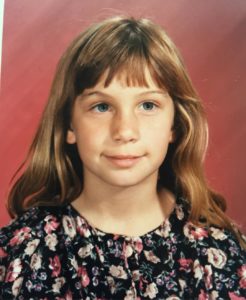
Since early childhood, I can remember myself to be an intense and highly sensitive person. I had big feelings and a propensity towards dreaming and planning.
The image of me to the right was taken when I was eight – the year I began public school and about the time I began to surf. My home life was so unstable that I ended up trading in much of my innate drive towards introspection and dreaming for external validation. Once I was placed in public school, I became a first-class social climber, leaving me very vulnerable to any criticism or praise. My identity became centered entirely around how others perceived me and I began to have a progressively harder and harder time being alone.
The main thing I could still do solo was surfing – which I did as often as possible. In hindsight, it’s clear to me now that surfing was my childhood mindfulness practice. Surfing became the sacred outlet for which I could channel my energy sos to navigate through complex social scenarios and to mitigate crazy family drama. It saved me. I became obsessed with cold salt water and the smell of sex wax. I would go to sleep at night and feel that lightness you feel as you drive through waves. It held me together and kept me present.
I still feel this way about being in the ocean – whether surfing or swimming – it is a sacred experience, calling me into full presence.
I was also seduced by the culture which came along with surfing. I covered my walls with images of pro surfers, hung out at the local surf shops, and would save up all my money to buy a shirt or rash guard with a Roxy label. The hip marketing and superficiality of the industry didn’t seem to taint the sanctity I felt in the water. Still to this day, the Roxy symbol and the smell of sex wax leaves me feeling like I just connected with a core part of myself.
To me, these positive associations with surf culture are similar to the associations I now have with sitting down in front a journal and a good pen, with stepping onto a dance floor resounding with bass – ready to dance, or with sitting down on a meditation cushion in a communal space. These are all my mindfulness routes back to self. And in these associations, I feel like I’m stepping into my purpose – which is to live as the realest expression of myself while connected to the whole – to something greater.
I believe everyone needs these associations to use as anchors, imploring us back to our core selves and to fully savoring our lives. My first memorable experience of mindfulness came in the form of surfing, so I may always relate to surfboards as holy tools of healing – even if I rarely make the surf these days. It’s a beautiful association which impacts me regularly.
Surfing got replaced for a few years by parties, boys, and drinking. I started smoking pot at an early age and had a hard time in school. Externally, I was the ultimate party girl kept afloat by superficial friendships and shopping trips. Internally I was overwhelmed and anxious all the time. By the age of sixteen, my needs for external validation had peaked and I was a fucking mess.
I didn’t know how to be alone, was consistently hurt by the low-quality friendships I created, and was obsessed with looking good. I cried at school a lot, had a lot of unrecognized metabolic imbalances, and developed an eating disorder which persisted for nearly eight years.
Two of my core character strengths are introspection and earnestness, leaving me with a higher level of self-awareness than I experienced in many of my peers at that time. These strengths drove me to seek answers and support early, while also driving me back to surfing, writing, painting, and dancing.

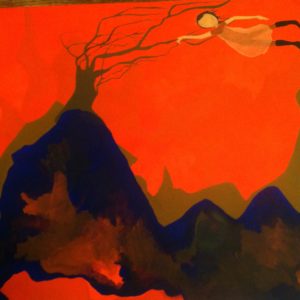
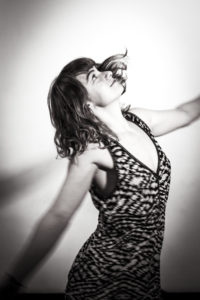
I always liked the idea and image of sitting meditation and mindfulness, yet found it impossible to implement into my daily life. As much self-awareness as I had, I lacked the wisdom to know the true benefits in sitting through extreme anxiety. It wasn’t until my early twenties that my mindfulness meditation practice really took off.
Meditation began for me while living in San Francisco. I moved into a yoga ashram where meditation was mandatory for all residents. I knew I’d never make it to yoga or meditation on my own, so I placed myself in the environment where it was enforced. Residents were required to wake at 5:30AM daily for meditation and to attend at least four yoga classes a week. This year-long living experience was profound in all aspects of my life — even amidst extreme anxiety and unresolved eating issues.
This ashram became my container, allowing me to experience the full spectrum of being me – especially the internally crazy me.
After this, I was hooked on going within – even when it hurt like hell. I spent the following three years in Oakland practicing with a community of young adult buddhists. I began somatic experience work with a young buddhist who came to my house once a week and meditated with me in our practice room before each somatic session. Meditation became a crucial part of my life and a welcome escape from the societal pressures I’d taken on at an early age.
It got to a point where most of my friends were meditators and most of my social activities were tied to the dharma. I went on six different Vipassana silent meditation retreats over the course of three and a half years and became convinced that I wasn’t romantically compatible with anyone who didn’t meditate!
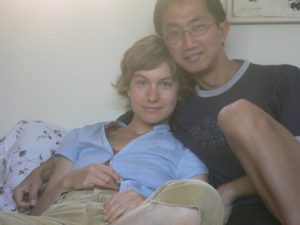
The image to the left is of me with one of my closest meditation buddies at age twenty-three. I was most at home when I was meditating or practicing some other form of mindfulness practice – such as silent hiking or cooking.
There were times when I felt like I was just too intense and sensitive for this world, so assumed I could always become a buddhist nun. I even shaved my head a number of times and researched a few different monastic options. It’s clear now that I’m not meant to be a monastic, but meditation was the profound salve I needed for the anxieties I’d been avoiding since early childhood.
About 15 minutes into a mediation session, I could feel my whole body relax into itself. My breathing slowed and deepened and my physical experience became all there was. After years of having intense feelings and anxieties which I felt pressured to hide or make “go away,” it was SO LIBERATING to sit with others where the sole purpose was simply feeling.
I realized for the first time that I’d been craving permission to be a deeply felt person. I’d been craving my own personal church which praised the parts of me that this culture didn’t seem to cater to. And now I found it inside of me. This felt essential.
As my physical health got progressively worse, it became clear that sitting meditation was not enough to help me. My buddhist teacher suggested that I couldn’t meditate my physical symptoms away and it became harder for me to sit with my symptoms. Truth be told, after obsessively sitting daily for years on end, I’d burnt myself out.
Out of complete necessity, I began to place more focus on understanding my chronic symptoms – which I document in my health history here if you’re interested. And for almost 5 years, I lost the ambition to meditate outside of the occasion social gathering. My needs took me elsewhere and I found mindfulness in the form of dancing and intimacy with others.
I built a rich community in Berkeley and experimented with sacred intimacy. I attended eye-gazing parties and conscious cuddle parties. I went to ecstatic dance regularly, joined the touch contact improv community, and went to Burning Man.
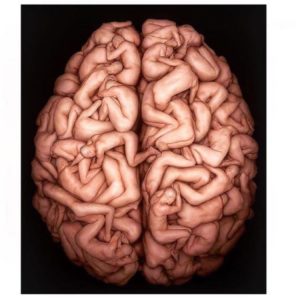
I learned a lot during this period about my own capacity for deep connection with others and the amount of healing which can come out of intimacy and being seen. This was the first time since childhood that my social life was one of my main focuses and, at the same time, wasn’t contributing to my suffering or disassociation from self. My relationships became conscious, deep, and healing — even if at times triggering as fuck.
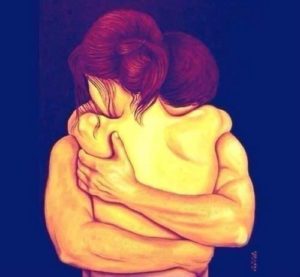
Once I hit my saturn returns around twenty-eight…. I realized something profound about myself: I’m a future-oriented thinker. My natural tendency is to envision the future and I’m at my best when I’m striving towards goals and dreams. All of my health issues throughout my teens and twenties had made the future hard to predict. Illness can do that — pull the rug out from under our feet and leave us unable to envision a future we’d otherwise be dreaming about.
As I regained health and moved close to thirty, my future became top priority and the dreams which had been buried under years of survival stress came up – seeking recognition. Socializing lost a lot of it’s priority as my time became a precious dream-building resource. With this loss of social time, I also lost some profound time spent in mindfulness-based intimacy and I found myself getting caught in my thoughts more often again.
Sitting meditation came back into my life as if some silent universal alarm had summoned it. I HAD to sit in order to function. I felt anxious to do good by the dreams and visions which were now speaking to me and the game of “catching up” to where I thought I should be at the age of thirty was adding stress to my already-full schedule. This anxiety to build my dreams quickly and “catch up” was making my current circumstances harder to manage and was impacting my health.
What began as just a ten minute sit in the AM followed by journaling….turned into twenty minutes in the morning and twenty minutes before bed. I’ve also began to slowly design my own schedule to include all my mindfulness loves: swimming, surfing, writing, dancing, cuddling, doodling, walking while listening to music, etc…
These days mindfulness is a regular part of my morning and evening rituals and an invaluable resource I can access at any time in everything I do. It’s an evolving lifestyle choice and an expression of values. I’m building a tribe of value-driven like-minds and giving myself as many anchors as possible. Mindfulness forms the platform from which I create healing protocols for all my clients. It is essential to healing.
Here are some areas where mindfulness has clinically proven beneficial:
- Emotional well-being and ability to enhance positive emotions while diminishing negative ones.(1)
- The ability to tune out distractions and focus in on tasks at hand (2).
- Better ability to handle stressful situations and regulate cortisol naturally (3).
- Better quality sleep and more stable energy throughout the day (4).
- Reduction in stress, anxiety, and depression.
- Slows the cellular aging process (5).
- Reduces pain (6).
And if you’d like more about the data relating to studies on mindfulness, I recommend checking out Chris Kresser’s article on mindfulness here, where he more thoroughly elaborates on some of the studies I reference above and goes deeper into the physiological impacts of mindfulness practices.
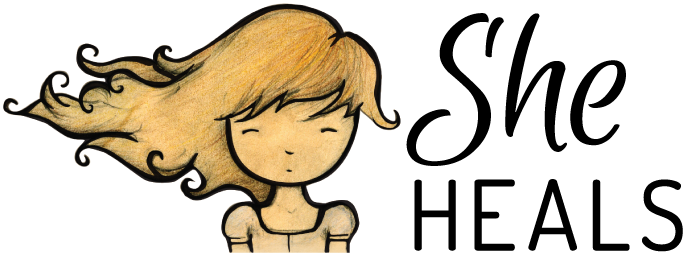
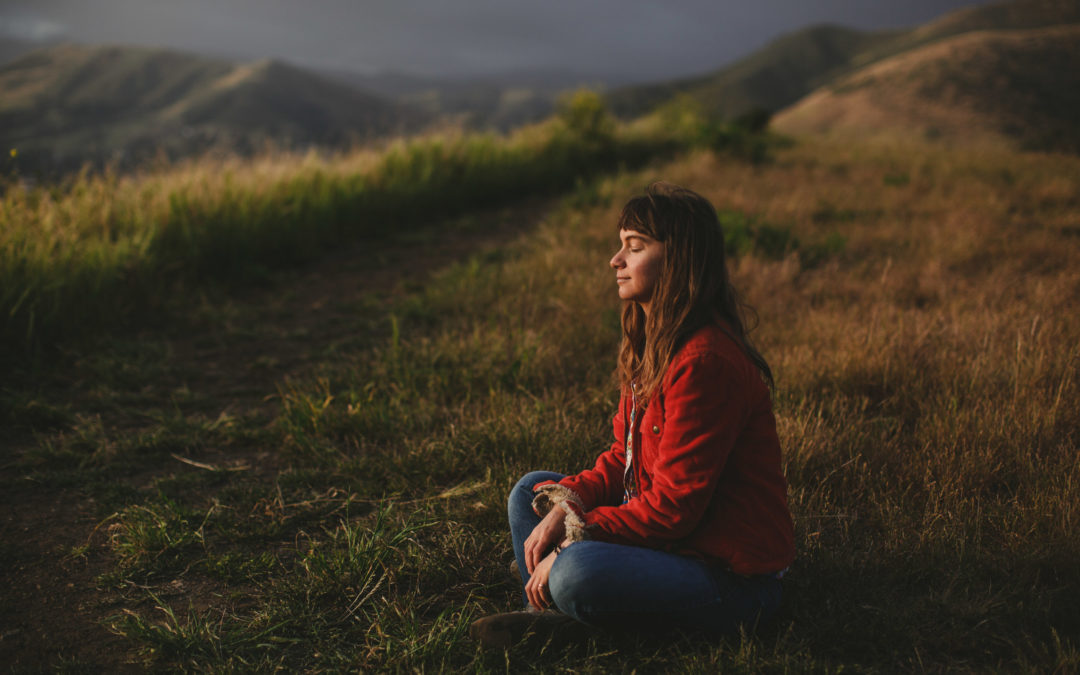





Recent Comments